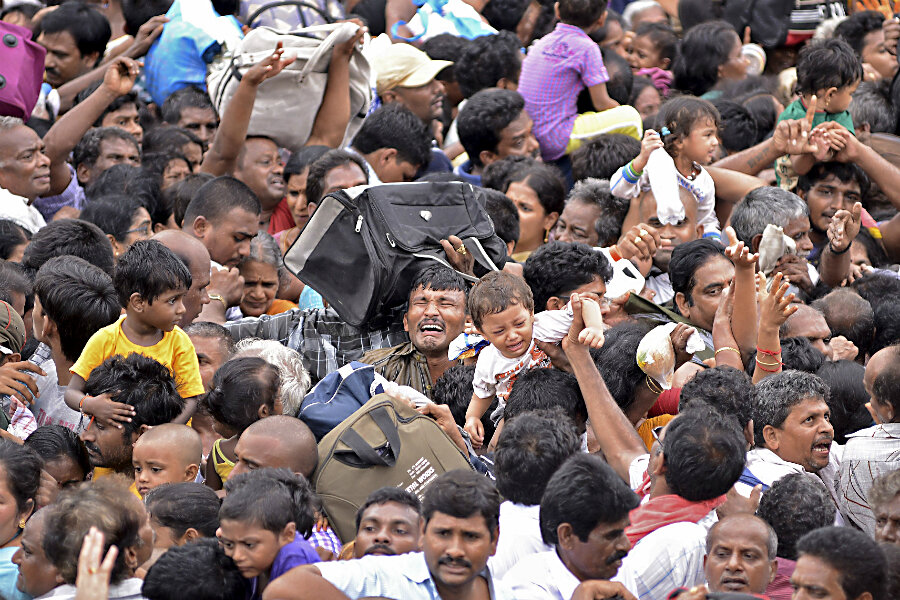Why do deadly stampedes occur during Indian religious festivals?
Loading...
At least 27 people were killed and another 29 were injured Tuesday while trying to rush towards the Godavari river at Rajahmundry in India.
Thousands of worshipers flocked to Rajahmundry to participate in the Maha Pushkaralu festival, a 12-day event that takes place once every 144 years when participants bathe in the river.
According to reports, the stampede was triggered by pilgrims trying to retrieve their shoes that had fallen off in the rush to the river bank.
“Deeply pained at the loss of lives due to stampede at Rajahmundry. My condolences to the families of the deceased & prayers with the injured,” India’s Prime Minster Narendra Modi said on his official Twitter account.
Festival-goers believe that bathing in the river washes away sins, and many believe it is more favorable to bathe on the festival's first day.
Stampedes are frequent in India and other parts of South Asia, where historic sites and other religious venues are not designed for the large numbers using them.
In 2011, more than 100 were killed at a festival in the state of Kerala, and in 2008 more than 220 people were killed at a stampede at the Chamunda Devi Hindu temple. One of the most lethal stampedes in India occurred in 2005, when nearly 250 people died in a stampede at the Mandhar Devi temple in the western state of Maharashtra, which was exacerbated when relatives of Hindu worshippers crushed by the crowd reacted by setting fire to nearby shops.
Last year when a predawn stampede in India’s largest city killed at least 18 people, Mumbai police admitted that crowd management was poor and authorities at the scene were badly outnumbered.
“We didn’t think the crowd would be so great,” Mumbai police commissioner, Satyapal Singh told The Independent. “Also, it’s an emotional occasion when police cannot take harsh measures to push back the crowd.”
Stampedes at religious festivals in India, happen as a result of massive crowds of people in a setting that is poorly controlled.
A study conducted on human stampedes at religious festivals indicates that religious mass gatherings in India are often organized in rural areas, thereby increasing the vulnerability due to venue inadequacies and infrastructure limitations. The report illustrates at length,
“Safety and comfort of religious mass gatherings is primarily influenced by vulnerability of the location and their accompanying characteristics. Religious festivals, especially when located at remote rural areas and on hilly terrains, and on the foothills or at river banks lacking proper pathways always pose a geographic risk to pilgrims. Steep slopes, uneven topography of the venue, dead ends, slippery and muddy floors, narrow passages, convergence of pedestrian flow to a single point are among the common risks prevailing in religious gathering sites, compromising safety and triggering stampedes.
Over the years, risk management strategies to tackle religious stampedes in India have been inadequate and have failed consistently.
Human stampedes are not limited to religious festivals in India. Since 1994, more than a thousand Muslims have been killed during stampedes on Jamaraat Bridge near Mecca, Saudi Arabia, during religious pilgrimages and rituals. Sporting events, nightclubs, and concerts have also been the site of deadly stampedes from Brazil to Amsterdam to Chicago.







